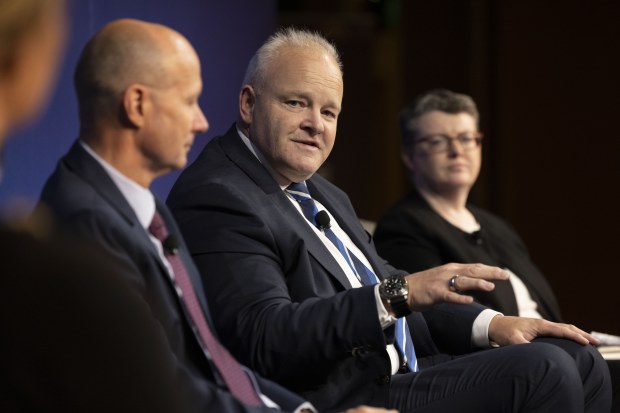“To the audit firm, to have a look at what went wrong, it’s much more powerful to look at something that we know that there was a problem with,” he said at The Australian Financial Review’s CFO Live conference this week.
“[To say], ‘these financial reports you audited, we found a flaw in your work’ – I think that’s much more powerful than coming up with a list [of issues] and going ‘OK, we’ve looked at those files, but we don’t say that there’s a misstatement’.
“[Because] then we have too-ing and fro-ing over discussions as to whether there was a problem or not.”
Mr Yanco said not being able to point to specific misstatements was “a fairly significant issue given the amount of airplay we get on the issue”.
ASIC would now use financial reports with misstatements as “a key input” to its selection process for audit review files, meaning there was a greater chance of finding issues with them.
Poor auditors to be called out
Mr Yanco said ASIC would also be more proactive about contacting companies when there had been issues in the work done by their auditors, saying the watchdog’s chairman, Joe Longo, was especially keen to improve accountability.
“When we make a call to you (company CFOs and audit committees] or send you an advice that we’ve found a problem, we’ve decided this is something that the chair will decide in every case,” he said.
“Our chair has decided that he will look at every case, and we’ll probably [decide] to advise the company when we find a problem with the audit.”
Louise Petschler, general manager of governance at the Australian Institute of Company Directors, has previously called for company directors to review auditors every five years, and said this information would help.
“There is an opportunity for boards and for audit committees to step up the frameworks and the rigour they apply to assessing audit quality,” she said.
“An important part of that is ASIC having direct contact with boards to share the results of its findings, which is only relatively recent but establishes a direct and independent source of information with the audit committee.”
Ease deadline pressure
Also speaking at CFO Live, EY’s head of assurance Glenn Carmody called for more flexibility around financial reporting deadlines to enable auditors to improve their work.
Under the current reporting system, auditors have a “busy season” of a couple of months in the lead-up to financial reporting deadlines, but Mr Carmody said spreading industries’ reporting seasons throughout the year would ease pressure on staff.
“That means there’s a crunch period in the audit process and in the month-end process, with companies as well as auditors,” he said.
“So, that systemic challenge is there, and I think we need to talk more about whether there’s a way to take some of that stress away.
“Using data and technology will help because you can spread the workload, but I think being able to be flexible on deadlines will really help as well.”
EY fell short on 15 per cent of the audit areasanalysed in ASIC’s latest quality review. While this was up from 7 per cent last year, these results were still the best of the big four accounting firms.
Mr Carmody cited heavy investments in technology and making audit quality the number one metric by which partners’ performance was measured as key to the firm’s strong results.

